Originally posted June 2021
Transcript:
Hello my friends, and welcome to switchbox.studio. I’m your host Deadeye Dave, and today we’ll be talking about the Light Wave V2 – a surprisingly-unique linear designed by Velocifire.
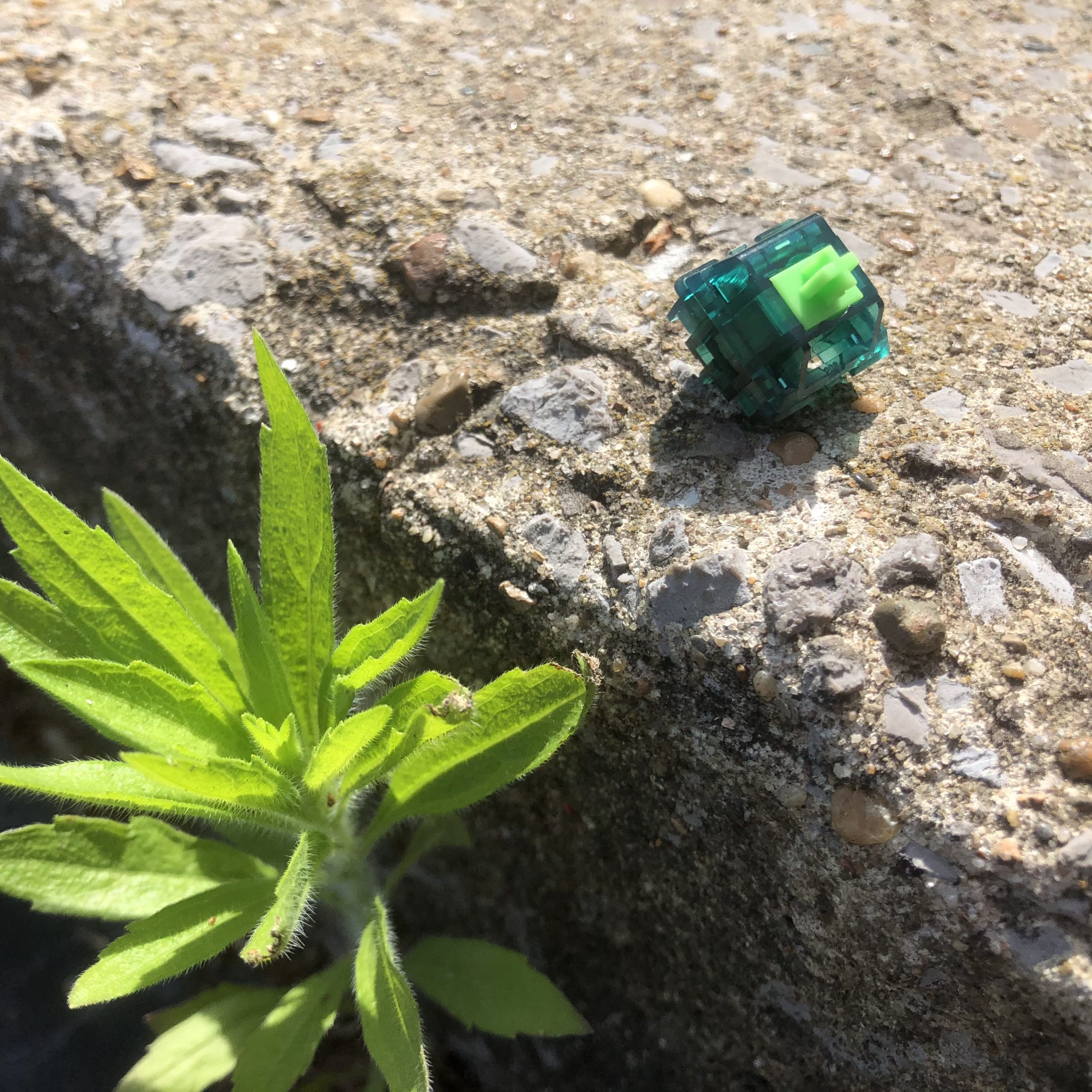
Today’s switch in the sun.
This switch was manufactured by KingKeyboard with custom tooling supplied by Gateron.
Stats:
- 5-pin / PCB mount
- 4mm full travel
- now – the website claims a normal actuation height of 2mm, but in practice this is most definitely a speed switch, actuating quite soon after the start of travel; perhaps around 1mm
- Polycarbonate housing
- POM Stem
- “60g gold-plated spring”, which translates to:
- 35g will get the switch moving
- 45g will actuate
- and 65 will bottom out
During the initial group and extras buys, these were 45-55 cents apiece.
I haven’t seen any specific mention of running them again, but I’d be surprised if they didn’t given the switch’s bespoke aspects.
Lore / Trivia:
According to the Velocifire rep in the original interest check post, this switch has custom molds for every plastic part, utilizing extra-precise production methods and mirror polishing for enhanced smoothness of the final product.
It almost sounds too fancy for a company whose products you can find in Walmart (and who, for the record, made the worst mx-compatible board I’ve yet used), but the claim bears-out in how unusually smooth this switch is straight out of the bag.
Molds custom-made by Gateron, but manufactured by KingKeyboard – No, I’ve never heard of them, either. I didn’t look too deeply, but the only references to them I found were from this switch and its prior version.
Speculation: perhaps KK is the new manufacturing arm of Velocifire, which appears to be expanding globally. Their official headquarters are in Chino, California – but the rep on the forums who I also assume writes the English marketing materials does not appear to be a native English speaker.
The Quirk:
Not mentioned in the interest check or the product description – or even clearly depicted in any of the official photos – is the feature that interested me enough to jump on the last 70 extras Bolsa had on-hand. What is it?
No, not this absurdly lorge spring –
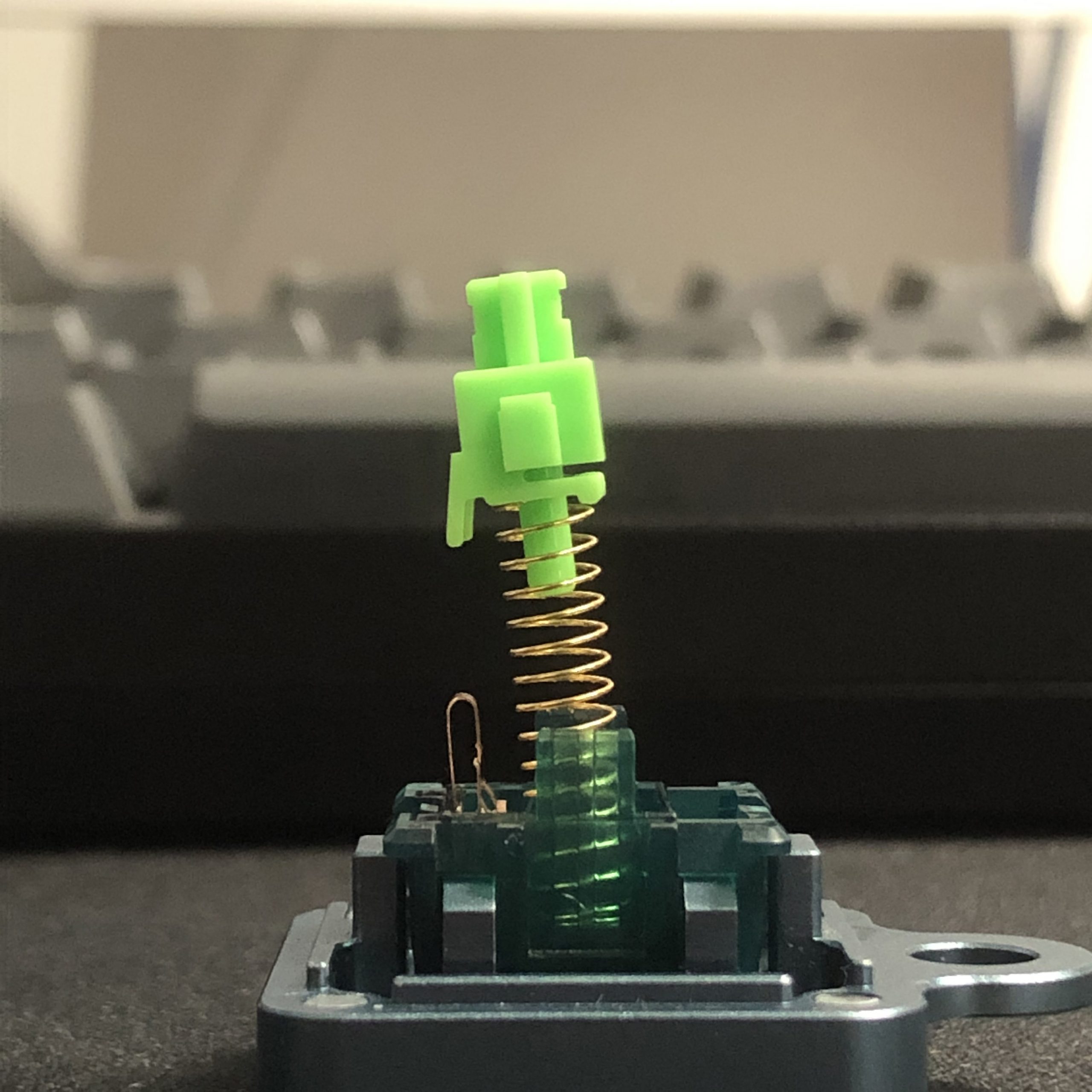
The longboi spring and single-piece dampened stem.
This thing; a very unusual stem.
The most obvious bit is the pair of pliant legs on either side, acting as dampeners. In addition to those, however, is also the wide, flat top-surface of the otherwise short rail sections.
To compliment the weird stem, the inside of the bottom housing is specially shaped to interact with the pliant legs, and compress them *almost* all the way before the center pole and contact legs bottom-out themselves.
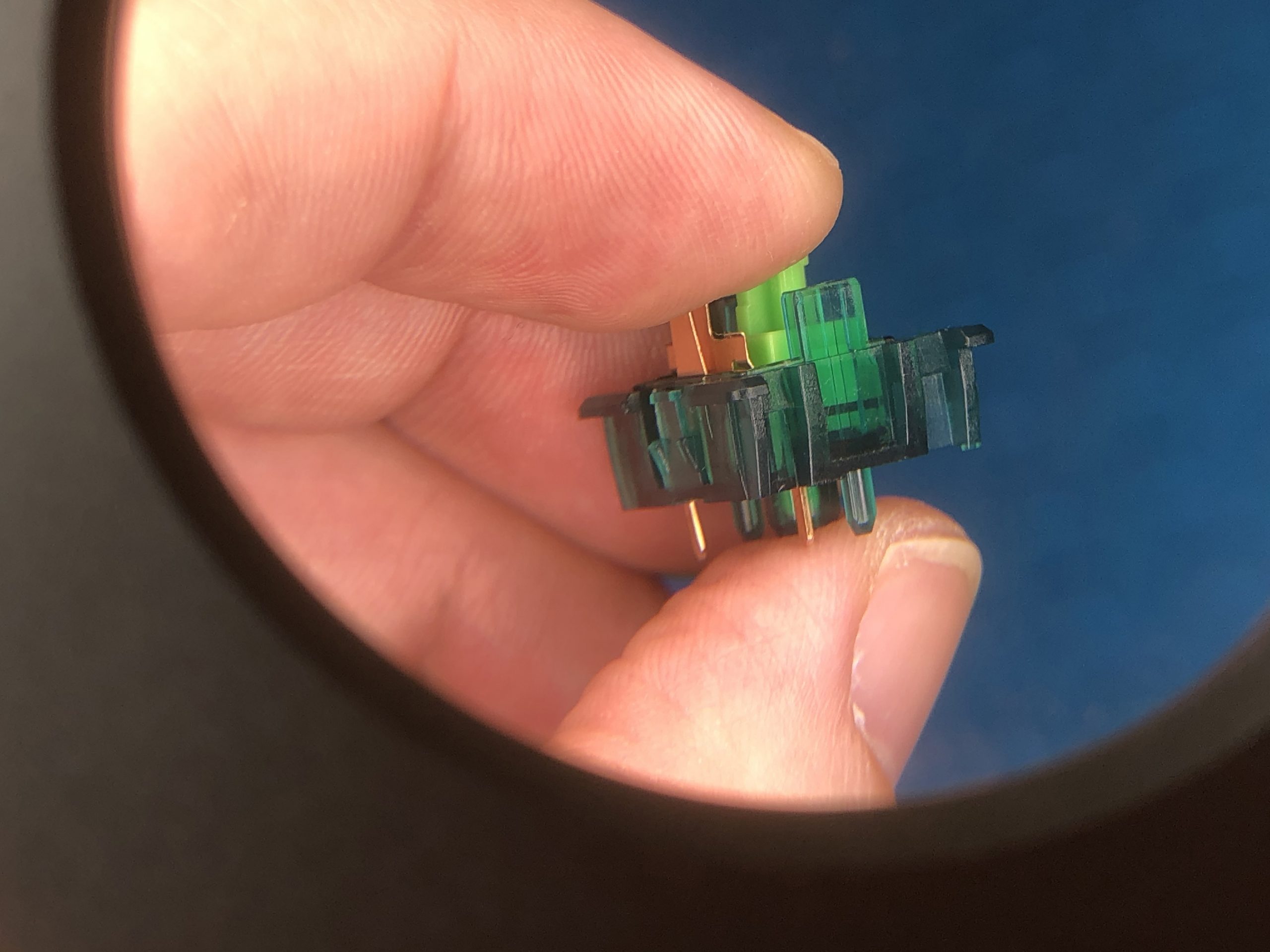
A close look through the housing.
Unlike other MX dampeners, this one isn’t made of a softer material, and doesn’t require extra parts or extra complicated injection-molding.
Stem Comparison:
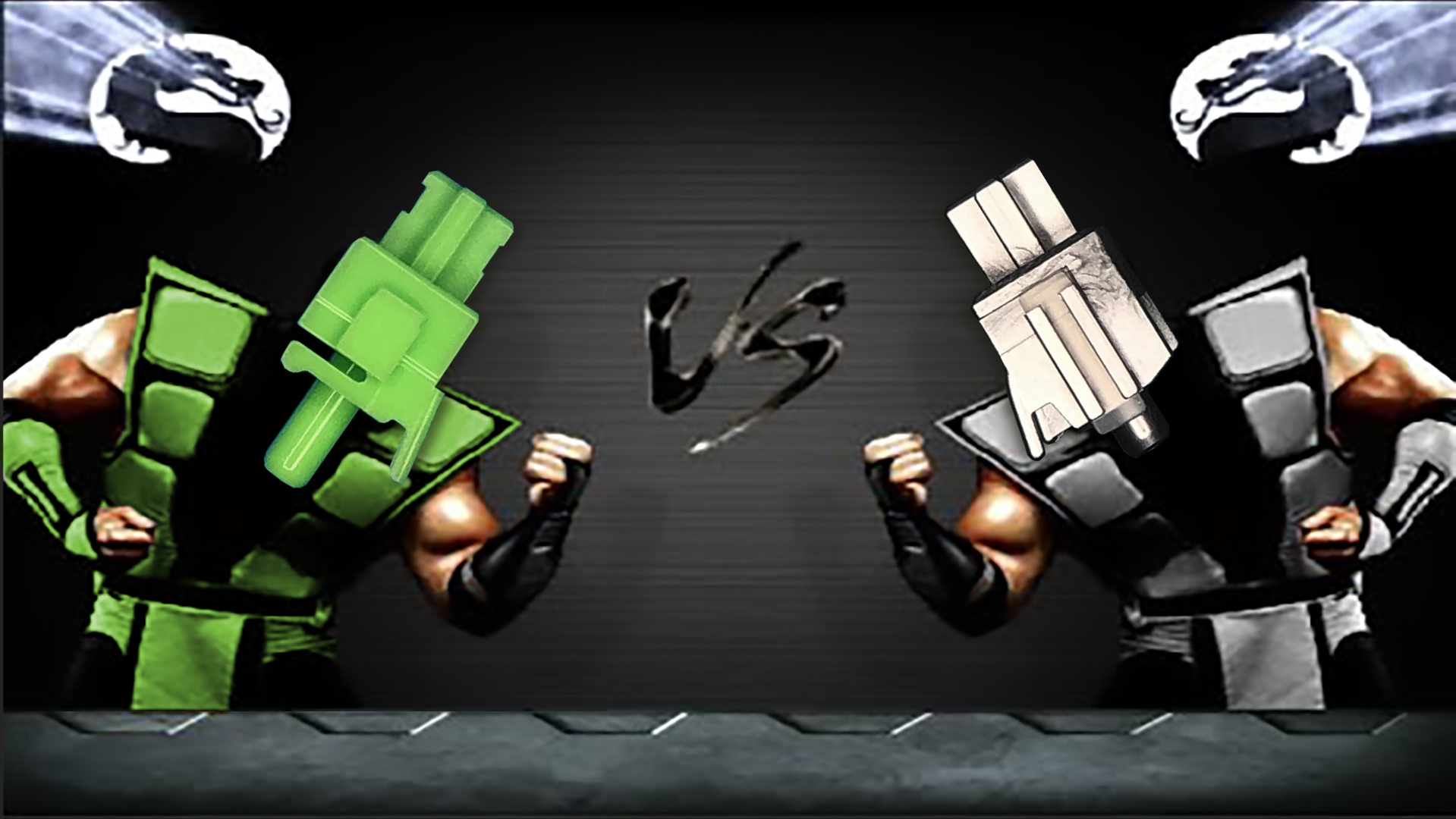
FIGHT!
Below you can see the Light Wave V2 stem compared with a Gazzew silent linear on the left, and an Ink Black on the right. Side-by-side, it’s easy to see how unusual the points of contact for this stem really are.
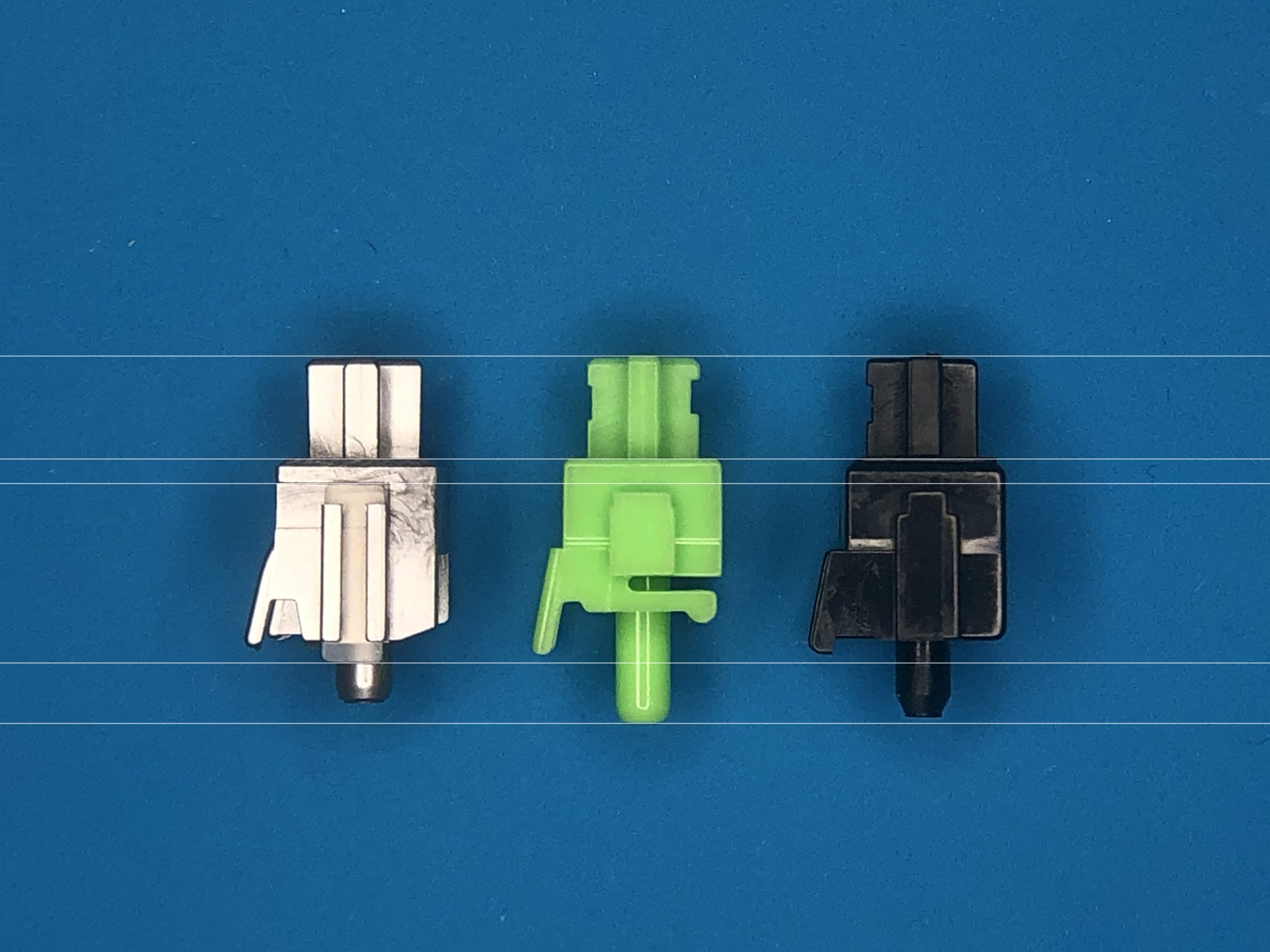
Comparing vertically-relevant bits
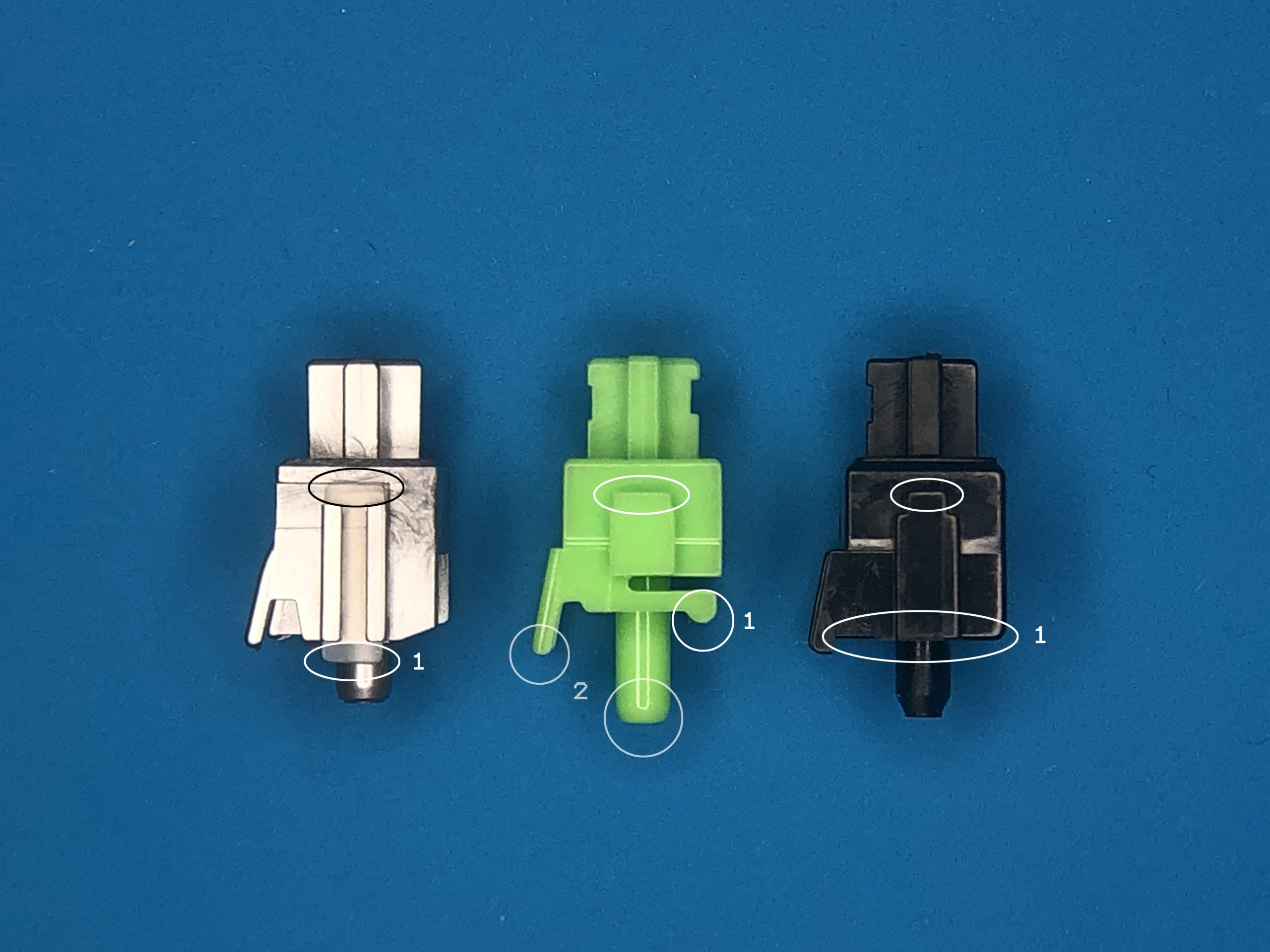
Highlighting the top and bottom points of contact
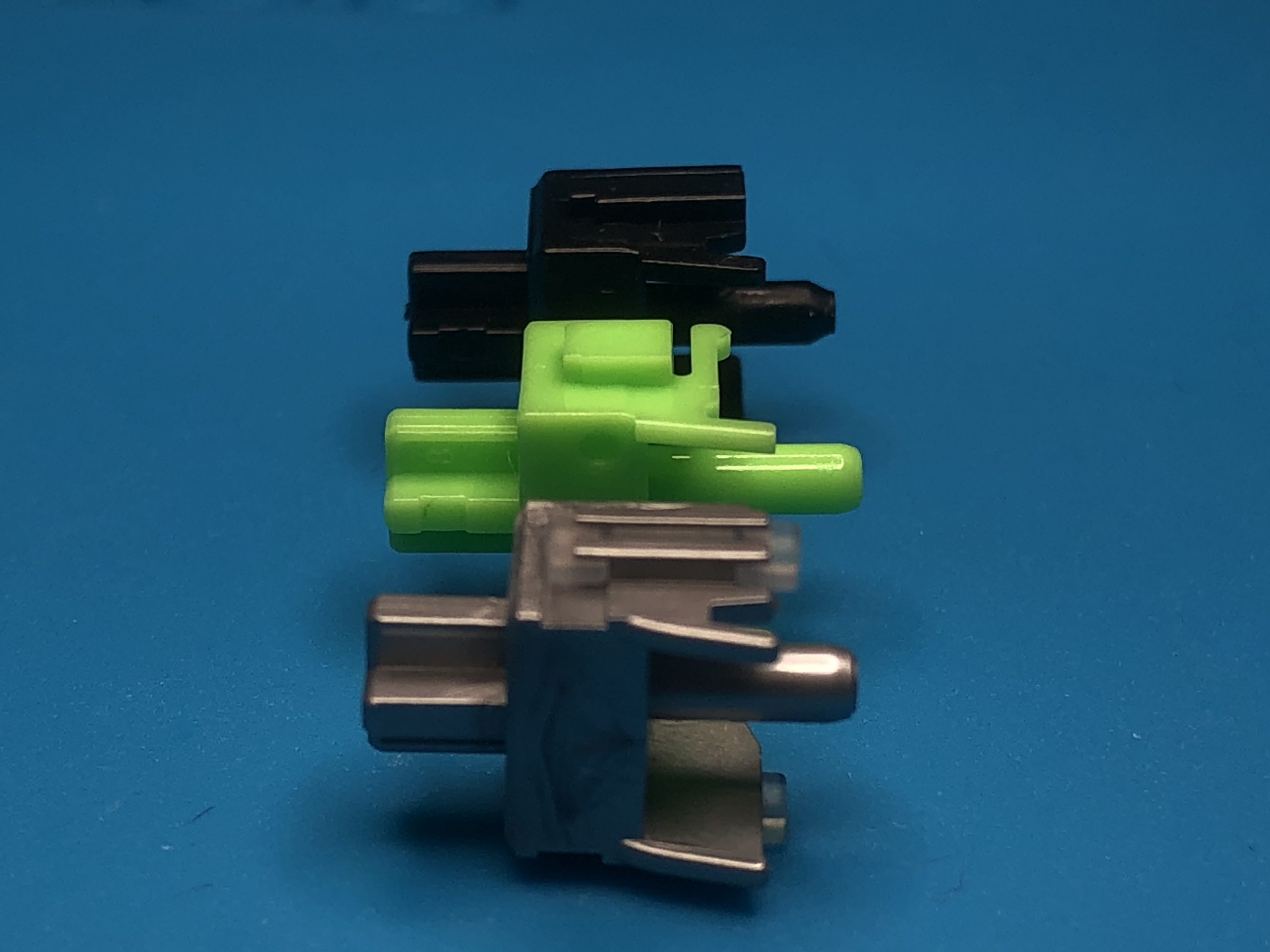
A close-up angle showing the pliant leg static mechanism.
For this reason, the less obviously but equally unique Light Wave V2 housing plays oddly with other stems. The Light Wave V2 stem, while quite smooth in many other housings, loses the benefit of its dampening legs and instead bottoms-out (solely) on the contact legs or center pole depending on the housing.
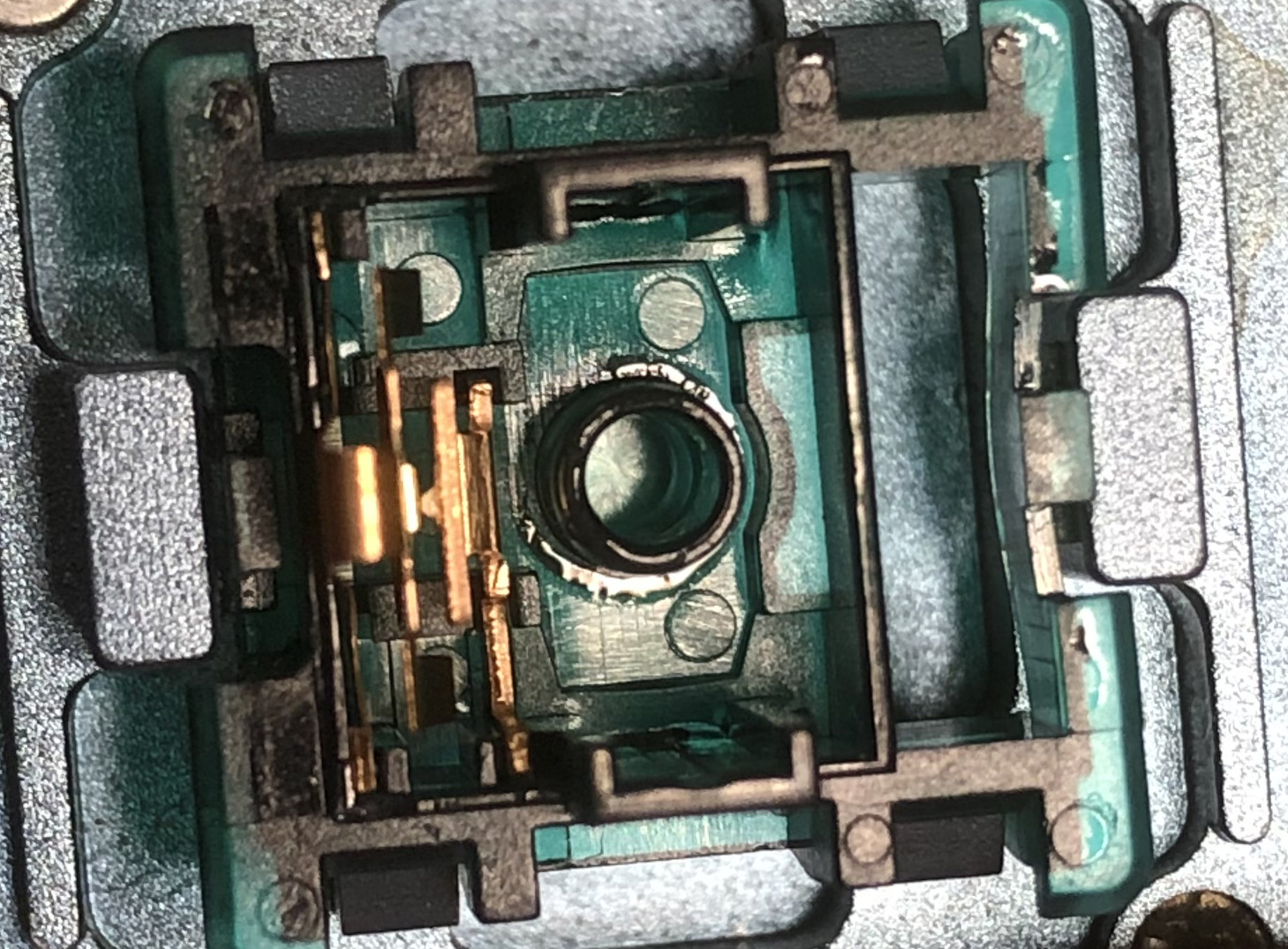
Close-up of the bottom housing; note the topography of the floor there.
Performance:
So how is it, really? It’s weird – but is it good? Short answer, yes. If you just want something really smooth, these are a great bet – you can hear that “but” coming, can’t you?
It’s the sound. While these are lubed from the factory, have excellent fitment between the two housing parts, and are hella smooth – they are *not* hella refined. Out of the bag, the stem is rattly and the springs have a sound that reminds me of a Slinky™ rolling down stairs.
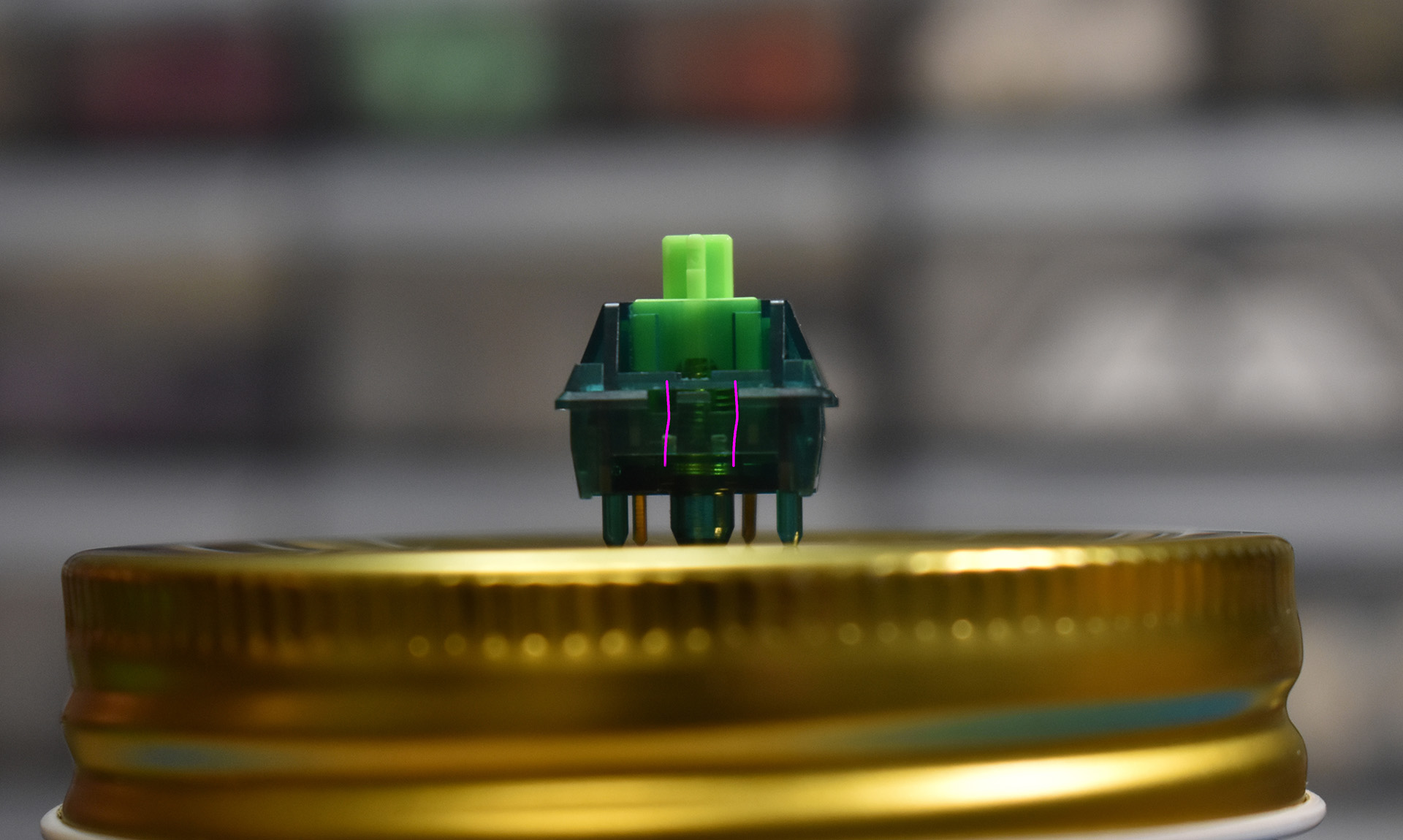
Slinky spring
No wonder, too – that big, long spring is already quite compressed when the switch is open. If you look closely, you might be able to see it trying to buckle, only prevented by the center tube and stem holding it in place. Not only does that make the spring want to carry vibrations, it also makes it brush against the top of the tube. These are some noisy, if not loud switches.
Even more than most, these really come alive when you lube them – but maybe for a different primary reason. I tested individual switches with 205g0 and 106, and decided to go with the oil. While the smoothness itself only saw slight improvement from its already admirable position, the sound improved significantly.
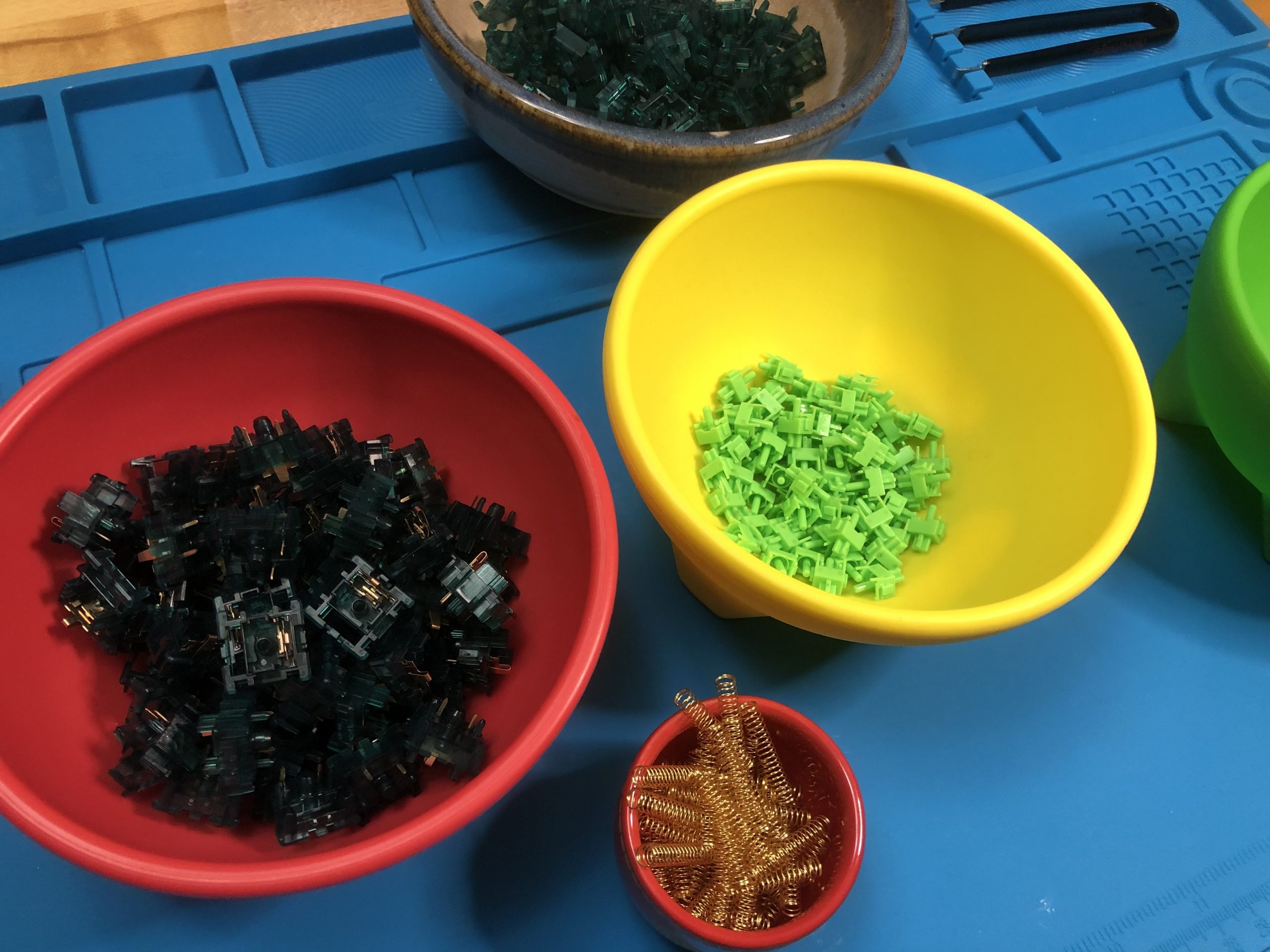
Dis-assembled switches
Gone is the raspy Slinky sound, and gone is the rattle of the stem against the polycarbonate housings – in its place, a luscious “plocky” sound.
This lovely sound owes its character in part to the lube, but as much to the unusual stem shape. The pliant legs on the bottom make for a softer, yet still crisp bottom-out; both in sound and feel. The broad top surfaces of the rails that strike equally broad surfaces on the top housing make for a louder, sharper sound than the bottom-out. Pair that with some case dampening and some tall ABS keycaps and you’ll get a sound like this:
Recommendations / Use-case
As much as I love the sound and smooth feel of these switches for typing, I find them hard to recommend for that purpose. Despite what the spec sheet says, these activate very early and are very easy for me to actuate unintentionally.
By the same token, however, I think these would make an ideal gaming switch. The speedy activation is an obvious plus there, and so is the style of dampening. It takes the edge off of bottoming-out without sacrificing a crisp, definitive feel like the softer mechanisms of silent switches do to varying degrees.
I can easily recommend this as a gaming switch to just about anyone, and for those of you who are both light and accurate typists, this could be a very satisfying daily-driver as well.
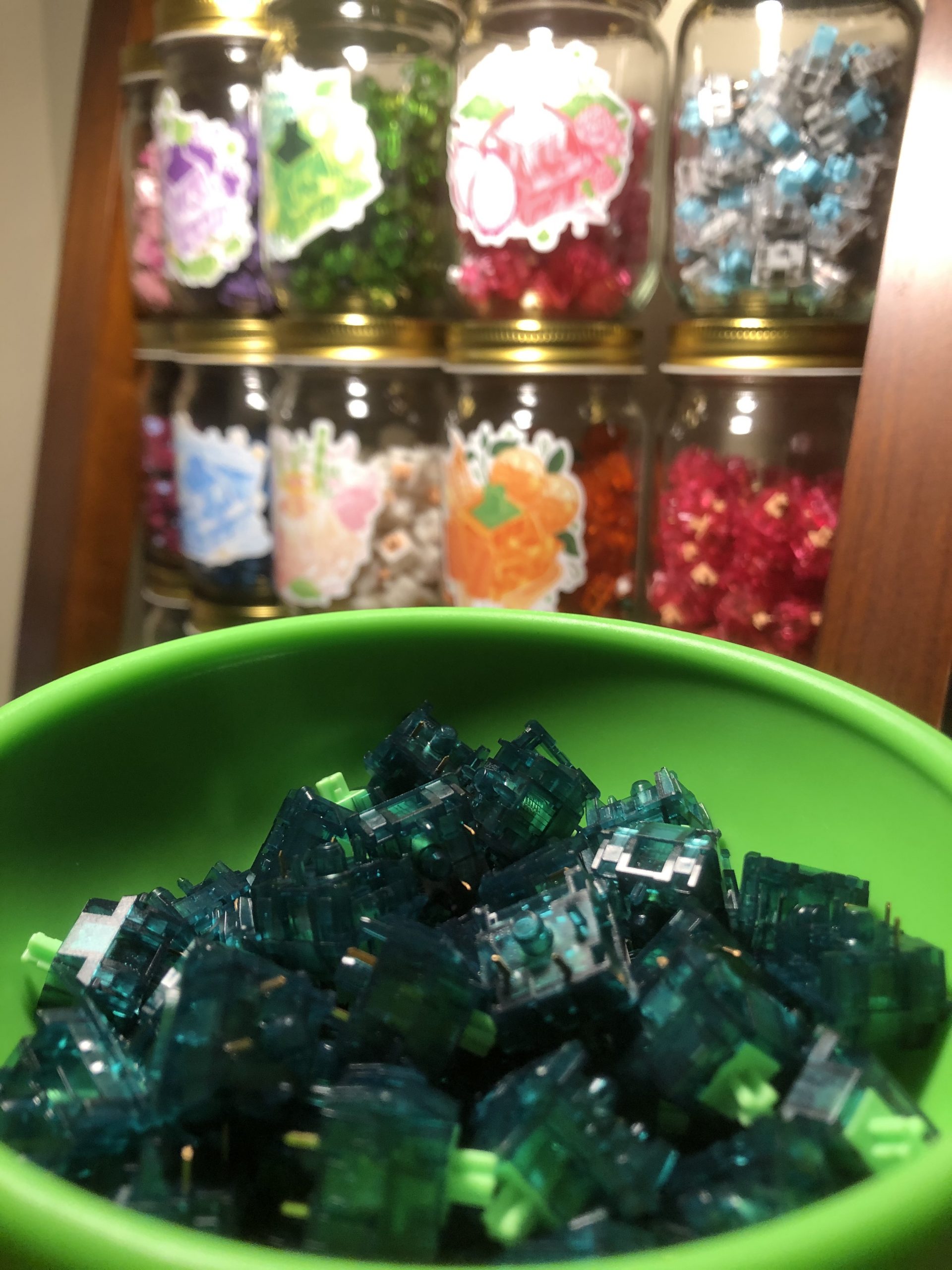
A bowl of tuned Light Wave V2s, and the Collection behind.
Valuation
While I think I’m going to stay away from numerical scores for these overviews, I do want to cover the topics of quality and value.
Purely in terms of quality, I’d call these “very good” with the heavy asterisk that they will sound pretty rough until you take the time to lube them. If you don’t mind to or are already planning to lube your switches, these might be an attractive option.
Factoring in the 45-cent per-switch price, these impress me a bit more. While they lack the out-of-box refinement that some of the pre-lubed JWK linears or higher-end Gateron-made offerings possess, they absolutely compete on smoothness – and for that price, I think that makes these a surprisingly solid offering from the team responsible for the one mechanical I’ve tried that I wouldn’t choose over a typical pack-in rubber dingus.
For that, I have to give Velocifire the Biggest Improvement award – and a bit more of my attention moving forward.
Typing Demos
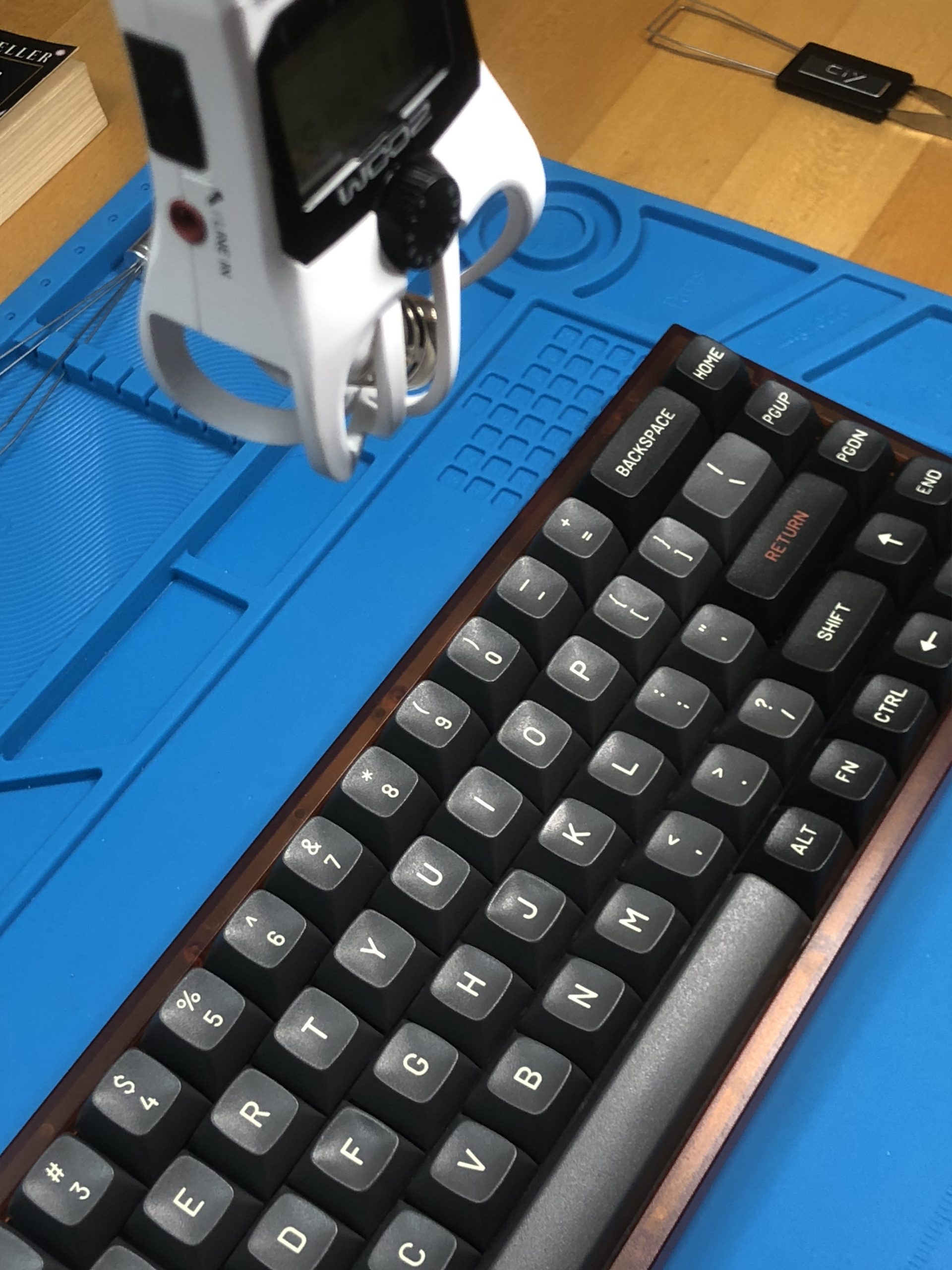
Recording the switches
And now, some individual tests and full typing demonstrations of the switches before and after lubing. (The first two are the same recordings embedded above.)
Stock:
Lubed:
Side-by-side individual switches:
Outro
Thank you all very much for reading. Remember – be kind to your fellow life-forms, and to yourself as well – and of course, happy clacking!

